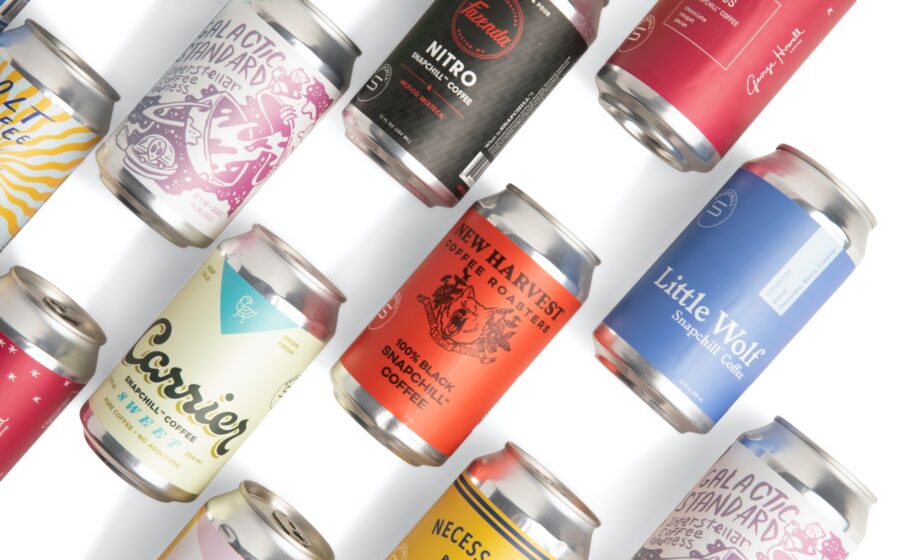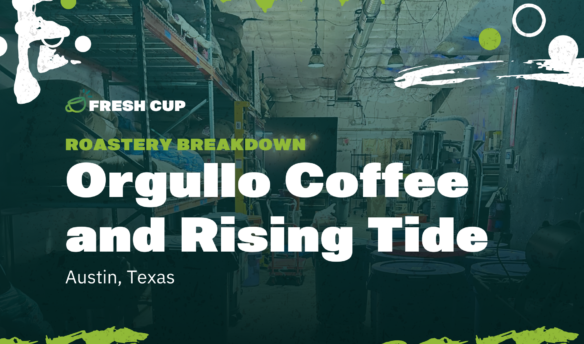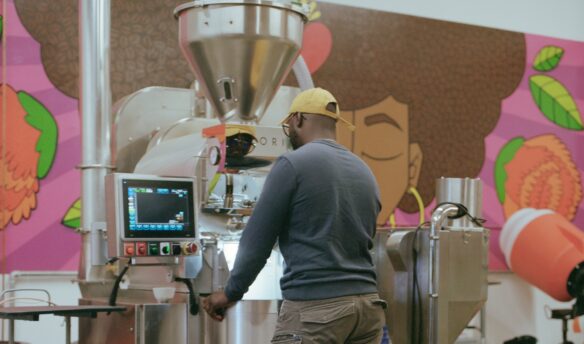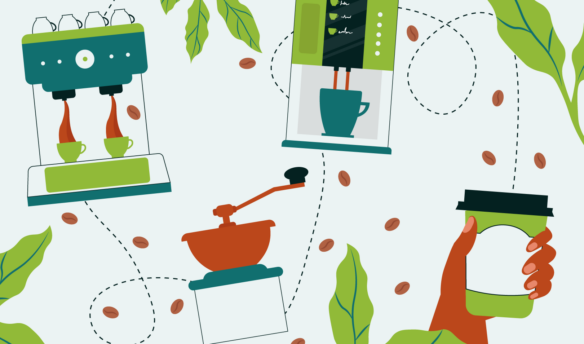This article is sponsored by our partner, Snapchill.
The ready-to-drink (RTD) coffee market is undergoing a rapid transformation. In the early 2000s, the market was dominated by sweetened iced coffee beverages sitting on grocery shelves and gas station fridges. In the 2010s, cold brew sparked another phase change as consumers sought more coffee-forward RTD options. And now, we’re at another turning point.
The RTD coffee category is exploding. The US ready-to-drink coffee market surged to $6.46 billion in 2024 and is expected to reach $8.61 billion by 2029, according to Mordor Intelligence. That marks an impressive nearly 6 percent annual growth.
Right now, much of that market has been captured by Starbucks: the mega-chain held the top spot in the RTD market with a leading 41 percent share. But as the demand for RTD coffee continues to rise, there’s more room for independent coffee roasters to enter the scene.
As the RTD coffee market enters another period of aggressive growth, now is the time for independent roasters to ask if RTD products fit into their business model. Yet, navigating the world of RTD coffee can be both complex and costly. How can coffee roasters realistically explore this revenue stream?
Cold Coffee That Stays True to Its Origin
Entering the RTD coffee space poses a challenge for roasters: how can they maintain the quality of their product and ensure the canned version will represent who they are as coffee roasters? Questions about taste and product integrity get even more amplified when roasters consider ice or flash-chilled options rather than cold brew for their cold canned coffee.

Cold brew highlights different characteristics of a bean compared to hot coffee. For roasters who focus on single-origin or regional blends, it can be tricky to recreate these flavor notes in traditional cold brew—whether it’s delicate floral notes, nuanced citrus, or other flavors associated with a particular origin.
However, new liquid-cooling technology is changing the way RTD coffee drinks are made to tackle this issue.
Snapchill partners with coffee roasters to create their own branded canned coffee through a process that actively chills coffee as it brews. According to Kyle Bosshardt, the director of business development at Snapchill, the coffee is brewed hot and then chilled to 38 degrees without dilution or oxidation. “We start with grinding roasted beans and brewing them hot to SCA standards,” he says. “The hot brew then gets funneled into a chilling machine, which instantly chills the coffee using a coolant at negative 40 degrees. By the end of the brewing cycle, it’s already chilled to 38 degrees.”
This technology lets roasters capture the same flavor and aroma of their hot brew into a cold coffee. For smaller roasters focused on quality or highlighting cold coffee from different origins, this offers a chance to extend the reach of their brand and tap into new revenue streams in retail and online.
Dawn Boulanger is vice president of marketing at Tri Star Energy, a wholesale fuel distributor that operates convenience stores (called Twice Daily) across Tennessee, Kentucky, Alabama, and Georgia. Many Twice Daily locations have coffee shops called White Bison Coffee inside, and Boulanger explains that after introducing the coffee bars in their store, her focus shifted to seeking ways to expand their brand. “It gave us an opportunity to get a branded product in the retail cases of our convenience stores and extend the brand,” Boulanger says.
White Bison stocks popular RTD drink brands such as Starbucks and Dunkin’. But they quickly realized they could set themselves apart from well-known brands, many of whom only offer flavored RTD coffee like French vanilla and mocha, by introducing an unsweetened black coffee can. Terry Messner, sales and category manager for Tri Star, notes that there aren’t many plain coffee RTD products, despite unsweetened black coffee being “an option people are actually looking for.”
How Costs Impact Small Roasters in RTD Coffee
One hurdle for roasters who want to enter the RTD coffee market is cost—many RTD drinks require minimum order quantities, and the capital required to meet that threshold can be unattainable for small businesses. Developing an RTD drink can feel akin to developing a whole new product: roasters have to think about production scale, flavor options, and packaging. These expenses can hit anywhere from thousands to millions, and this poses a significant risk for small roasters.
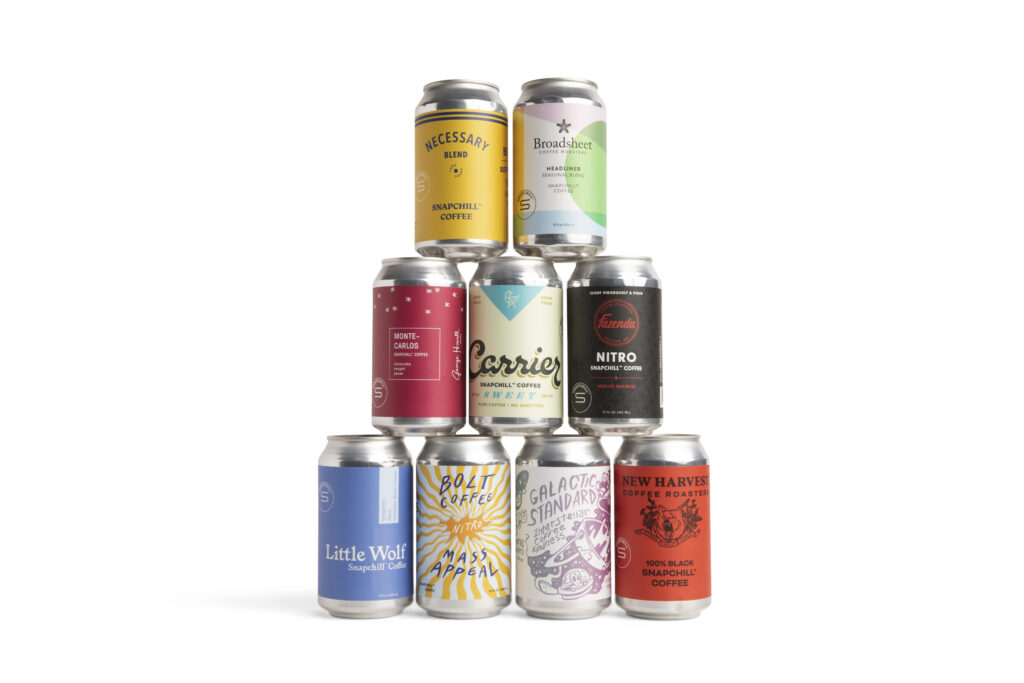
Most roasters entering the RTD coffee world work with co-packers or contract packagers who handle packaging and labeling for clients. Bosshardt explains that co-packers typically ask for minimum order quantities ranging from 15,000 to 30,000 cans, but Snapchill has a minimum order quantity of only 500 cans. “It’s around $1000 when you look at the cost of the can, the coffee, and distribution,” says Bosshardt.
Bosshardt breaks down what goes into that final number: first, there’s shipping, and costs can fluctuate based on how many units a roaster orders. Many small roasters working with Snapchill often begin with a larger minimum order of 2,000 cans to optimize shipping costs. The key is to fill a pallet, which holds 2,000 cans based on weight (shipping costs for a full pallet are about 30 cents per can versus 70 cents for a 500-can order).
Then there’s the cost of the coffee itself, which can vary based on what you choose. “The more exclusive coffees are going to be more expensive, and the retail price has to reflect that,” says Bosshardt. “But you can make a solid blend, which is more affordable, and retail it for $3.99—the ROI is certainly there.”
Plus, the Snapchill brewing method uses 30% fewer beans than a typical cold brew recipe. This means you can make a canned Snapchill drink with fewer beans than you’d need for a cold brew batch of the same size.
Now, let’s talk about profits: the starting cost for roasters to produce a can of Snapchill coffee is $1.85 per unit, and this price can decrease to as little as $1.35 for larger volume orders. Shipping costs, which can add 30 to 40 cents per unit, should also be factored in. As Bosshardt mentioned, you can retail a can for $3.99 and make a healthy profit, but roasters have to consider where their coffee is going.
When roasters sell RTD coffee to retailers, they need to understand how retail distribution works and what kind of profit they can expect. Typically, distribution costs around 10% to 15% of the retail price, sometimes up to 20%. In general, roasters can expect to make at least as much profit per pound of coffee sold as they do with wholesale beans. However, retail prices can vary depending on the store.
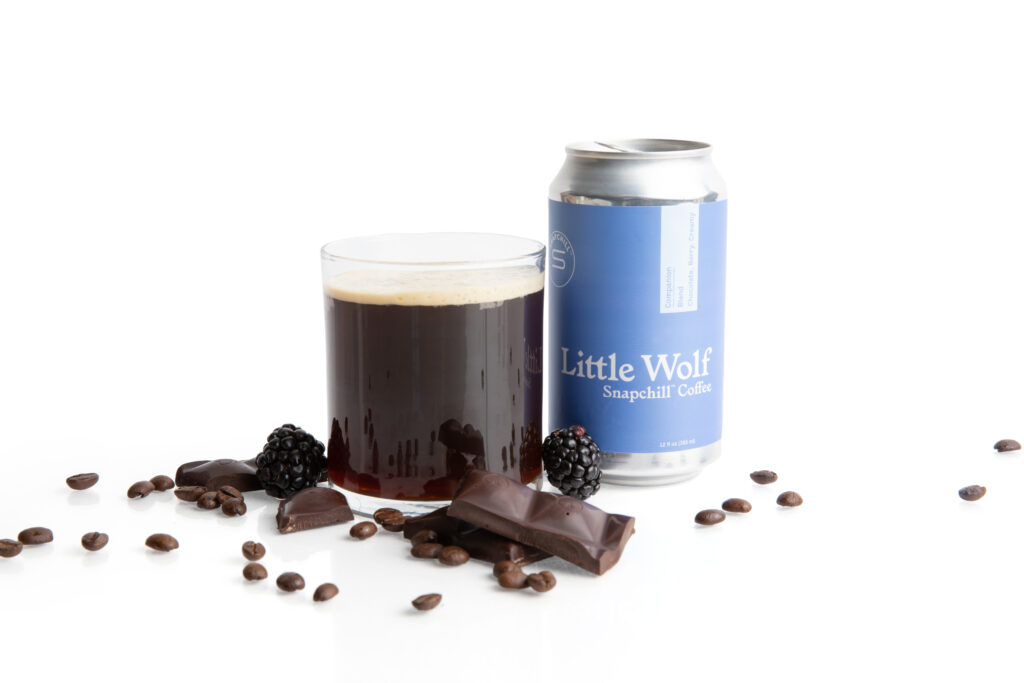
Bosshardt recommends starting with the wholesale rate of your beans and considering that as a baseline for setting the wholesale price for distributors. That can increase based on the retail price your buyer sets, especially if you’re selling in a store with higher prices.
However, if a roaster is just selling RTD coffee within their own cafe space or through ecommerce channels, they don’t have to worry about calculating the retail markup—just the profit margins. Here’s the formula to calculate your profit margins:
(Retail Price−Cost of Product)
————————————— x 100
Retail Price
Bosshardt explains that the average Snapchill roaster sells their cans at $5 per drink. If the base cost is $2 per can and you sell them at $5, that’s a 60% profit margin. “That’s where the numbers really make sense,” says Bosshardt, “especially because our cans are shelf stable for a year.”
RTD Coffee Can Build Your Brand Visibility
For White Bison, Snapchill provided a low-risk and low-cost entryway into the RTD coffee market. The brand has a built-in audience and distribution channel, so the decision to work with Snapchill “made perfect sense for us,” says Boulanger, “because we had our own distribution and our own channel where we sell it.”
But White Bison didn’t make this decision based on convenience alone. First, their roaster sent Snapchill five pounds of coffee, which Boulanger and her team then tasted and collected feedback. “It’s a great-tasting product, and the response has been that we have a very smooth coffee drink,” says Boulanger.
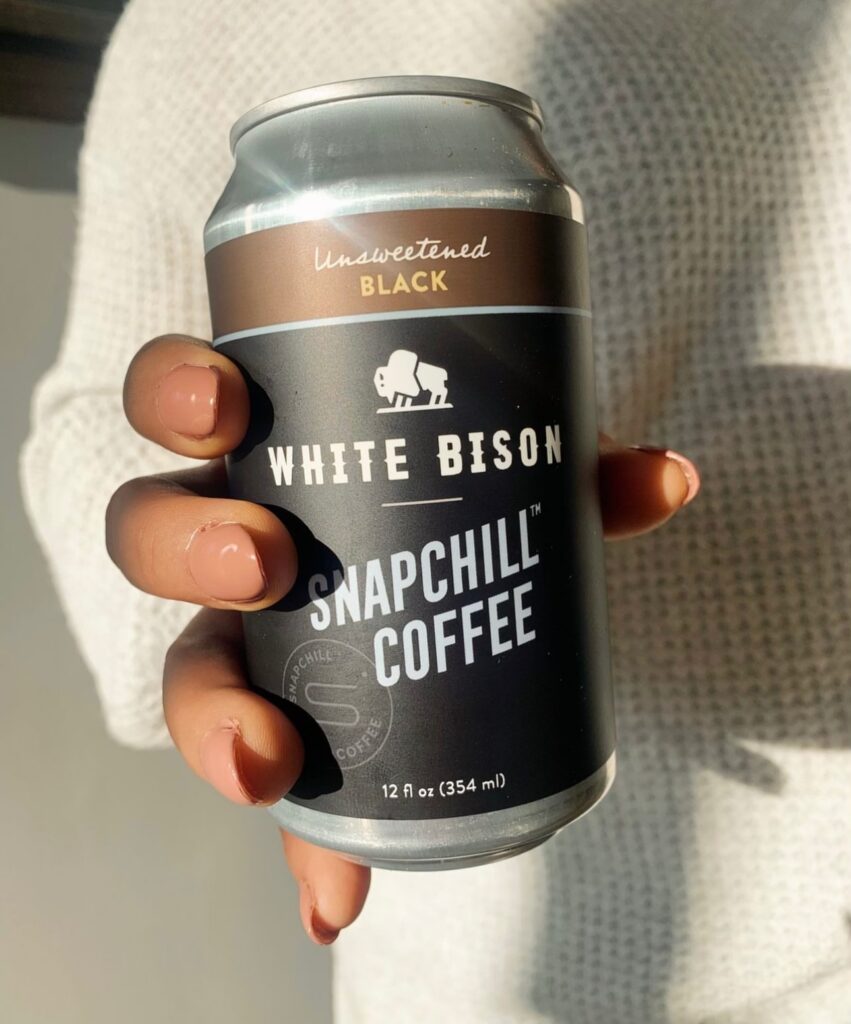
White Bison introduced their Snapchill RTD coffee line in stores in 2022, and in less than two years, it has become one of their top products across the RTD coffee category—and it’s shown the highest sales increase over the past year. “Cold brew is trending, and customers are gravitating to the product,” says Messner. He believes the surge in cold brew popularity directly impacts the rise of RTD coffee despite their RTD drink not being cold brew. “It’s in the cold brew family, but with a different process and unique flavor.”
White Bison believes their RTD coffee cans have been a solid tool for building brand awareness. “There’s a perception out there that gas stations have bad coffee,” says Boulanger. “But if people see the White Bison coffee shop, and then they see it in the cold section of the Twice Daily convenience market, it lends credibility—it’s a positive all the way around for us.”

Sponsored by SNAPCHILL
Snapchill uses a one-of-a-kind patented technology to brew coffee hot, chill it instantly, and can it as an RTD for roasters like Intelligentsia, Metric Coffee, and Dayglow.

